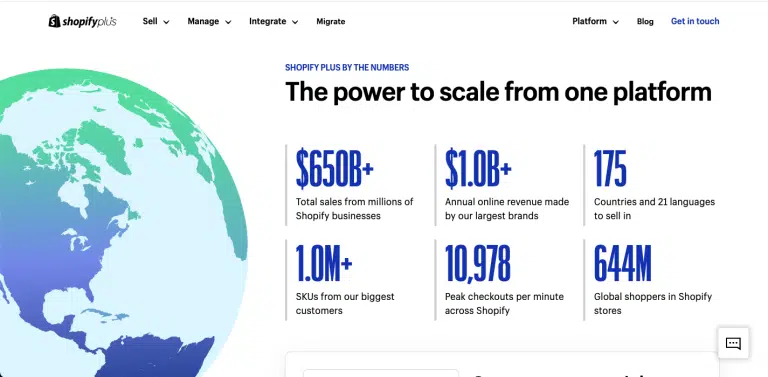Within the spectacular and rapidly changing field of modern e-commerce, businesses are actively looking for game-changing solutions that go beyond traditional frameworks. In response to this quest for innovation, emerges Headless Commerce — a revolutionary paradigm shift in the architecture of e-commerce, poised to redefine the operational dynamics of online businesses. At its essence, headless commerce represents a fundamental departure from the established norm by liberating the traditionally interlinked front-end and back-end systems. This liberation heralds a new era of unprecedented flexibility and agility for businesses, empowering them to dynamically respond to the ever-shifting demands of the market.

Headless commerce operates on the principle of decoupling the presentation layer (front-end) from the functional layer (back-end), dismantling the traditional bond between these two components. In doing so, it introduces a level of separation that transcends the limitations of the conventional monolithic architecture. This disentanglement enables businesses to independently manage and optimise both the customer-facing aspects and the operational functionalities of their e-commerce platforms.
The newfound flexibility granted by headless commerce empowers businesses to swiftly adapt to changing market conditions and consumer expectations. Furthermore, headless commerce paves the way for modular scalability, allowing businesses to selectively upgrade or replace individual components without necessitating an overhaul of the entire system.
The Evolution of E-commerce Architecture
Historically, e-commerce platforms have adhered to a monolithic architecture, a framework characterised by the tight integration of the front-end, back-end, and database components. This conventional approach, while functional for a certain period, eventually laid bare its inherent limitations in the face of evolving market dynamics and technological advancements. Recognizing the imperative for more flexible and scalable solutions, the e-commerce landscape has witnessed a transformative shift towards embracing headless architecture.
The traditional monolithic setup, with its unified and interconnected nature, offered stability and simplicity in its early stages. However, as businesses sought to navigate the complexities of a rapidly changing digital landscape, it became increasingly evident that this approach posed challenges in terms of adaptability, agility, and innovation. In practical terms, the decoupling facilitated by headless architecture means that front-end developers can focus on creating immersive and dynamic user interfaces without being tethered to the constraints of the back-end logic.

The essence of headless architecture lies in breaking down the traditional silos that bound different layers of an e-commerce platform. By allowing each component to function independently, businesses gain the flexibility to optimise and innovate on specific aspects without affecting the entire system. As the e-commerce landscape continues to evolve, headless architecture stands as a beacon of innovation, offering businesses the means to transcend the constraints of monolithic systems. The embrace of this architectural paradigm not only signals a departure from the status quo but also heralds a future where adaptability, scalability, and continuous innovation are the cornerstones of e-commerce success.
Understanding Headless Commerce for Shopify Stores
For Shopify merchants, the decision to embrace headless commerce signifies a transformative shift, propelling them into a new era of digital innovation. In stark contrast to the traditional tightly integrated architecture, headless commerce introduces a paradigm where the front-end presentation layer and the back-end commerce logic operate independently. This departure from the conventional approach opens up a realm of possibilities, empowering merchants with an unparalleled degree of customization, scalability, and speed, all of which converge to ensure a seamless and dynamic user experience.
The distinctive feature of headless commerce lies in its ability to liberate the front-end and back-end components from their historical interdependence. Unlike the traditional monolithic structure where changes to one aspect often necessitated alterations to the entire system, headless architecture allows for the autonomous evolution of these critical layers. Merchants gain the freedom to fine-tune the visual aspects of their online storefront independently of the underlying commerce logic. This means that front-end developers can experiment with diverse design elements, user interfaces, and customer experiences without being constrained by the intricacies of the back-end. The inherent agility of headless commerce translates into accelerated speed, a critical factor in delivering a frictionless and responsive user experience. With the elimination of dependencies between the front-end and back-end, Shopify merchants can achieve faster loading times, quicker transaction processing, and an overall snappier online environment.
Independent optimization of the front end allows for the creation of lightweight and optimised user interfaces, resulting in faster page loading times. This is particularly crucial for reducing bounce rates and keeping users engaged throughout their shopping journey. The separation of commerce logic from the user interface streamlines transaction processing. This efficiency is especially beneficial during peak traffic periods, ensuring that the system can handle a high volume of transactions without compromising performance.
Benefits of Adopting Headless Commerce for Shopify
Enhanced Performance
The adoption of headless architecture brings a tangible boost in site performance for Shopify stores. With reduced dependencies and streamlined processes, pages load faster, leading to improved user satisfaction and potentially higher conversion rates.
Seamless Customer Experience
One of the standout advantages of headless commerce is its ability to deliver a consistent and personalised customer experience across various touchpoints. Whether a customer interacts through a website, mobile app, or any other channel, the experience remains cohesive, contributing to increased customer loyalty.
Flexibility and Innovation
In a rapidly evolving digital landscape, the ability to adapt swiftly to change is crucial. Headless commerce provides Shopify merchants with the flexibility to integrate new technologies seamlessly. It acts as an innovation enabler, allowing businesses to stay ahead of the curve in a highly competitive market.
Challenges and Considerations
Development Complexity
The transition to headless commerce introduces a shift in the development principle that can be initially challenging. Traditional monolithic systems offer a more straightforward approach, where front-end and back-end components are tightly integrated. In a headless architecture, these components are decoupled, providing greater flexibility but requiring a more nuanced development approach.
Key Points:
- Learning Curve: Development teams may need to adapt to new technologies and frameworks associated with headless setups.
- Interoperability: Ensuring seamless communication between the front-end and back-end systems requires careful planning.
Ongoing Maintenance
While headless commerce offers increased flexibility and scalability, ongoing maintenance becomes a critical consideration. Businesses must be prepared to handle updates, security patches, and optimizations across both front-end and back-end systems independently.
Key Points:
- Dual Maintenance: Unlike monolithic systems where updates often apply universally, headless setups require separate maintenance for front-end and back-end components.
- Skillset Requirements: Maintenance may necessitate a broader skill set as teams manage different aspects of the system.
Cost Evaluation
The potential costs associated with implementing and maintaining a headless architecture require a meticulous evaluation. While the benefits are substantial, businesses must weigh these against the investment required for development, ongoing maintenance, and potential infrastructure upgrades.
Key Points:
- Initial Investment: Developing and implementing a headless architecture may require a significant upfront investment.
- Total Cost of Ownership: Businesses need to assess the long-term costs, including ongoing maintenance, updates, and potential scalability expenses.
Scalability Planning
While headless commerce offers inherent scalability benefits, planning for future growth is crucial. Businesses must anticipate potential increases in user traffic, transaction volumes, and system complexity to ensure the architecture can seamlessly scale.
Key Points:
- Scalability Testing: Rigorous testing is essential to verify that the headless architecture can scale effectively under varying conditions.
- Infrastructure Readiness: Ensure that the underlying infrastructure can support growth without compromising performance.
Integration Challenges
Integrating headless commerce with existing systems and third-party services can pose challenges. Businesses need a well-thought-out strategy to ensure seamless integration without disrupting existing workflows.
Key Points:
- Legacy System Compatibility: Compatibility issues with legacy systems may require additional development efforts.
- API Considerations: Effective use of APIs is vital for smooth integration with various services and tools.
Staff Training and Adoption
The adoption of headless commerce may necessitate training for development and IT teams to ensure they are well-versed in the new architecture. Overcoming resistance to change and fostering a culture of adaptation is crucial for successful implementation.
Key Points:
- Training Programs: Implement comprehensive training programs to equip teams with the necessary skills.
- Change Management: Foster a culture that embraces change and innovation to ensure a smooth transition.
User Experience Optimization
Decoupling the front-end and back-end allows for enhanced customization but requires a concerted effort to ensure a seamless and optimised user experience. Businesses must invest in user interface (UI) and user experience (UX) design to maintain high standards.
Key Points:
- Consistency Across Platforms: Strive for a consistent user experience across different devices and touchpoints.
- Performance Monitoring: Regularly monitor and optimise the user experience to address potential bottlenecks.
Case Studies
MYNTRA

Myntra, a leading fashion destination, faced the challenge of enhancing its online shopping experience to keep up with evolving customer expectations. The traditional e-commerce architecture posed limitations in terms of customization, scalability, and delivering a seamless cross-channel experience. Recognizing the need for a transformative solution, Myntra decided to embrace headless commerce for its Shopify stores. This involved decoupling the front-end and back-end systems, unleashing a new realm of possibilities for the online fashion giant.
BEWAKOOF

Bewakoof, a popular online fashion and lifestyle brand, faced the challenge of staying ahead in a highly competitive e-commerce landscape. The traditional e-commerce architecture limited their ability to deliver a highly personalised and seamless shopping experience across channels. Recognizing the need for innovation, Bewakoof decided to embark on a headless commerce journey for its Shopify stores. This involved decoupling the front-end and back-end systems to unlock new possibilities for customization, scalability, and user experience.
REBECCA MINKOFF

Rebecca Minkoff, a renowned fashion brand, faced the challenge of elevating its online shopping experience to meet the evolving expectations of modern consumers. The traditional e-commerce architecture posed limitations in terms of flexibility, customization, and delivering a truly unique brand experience. In response to the challenge, Rebecca Minkoff decided to embrace headless commerce for its Shopify stores. This strategic move involved decoupling the front-end and back-end systems, providing the brand with newfound flexibility and agility in crafting a more immersive and personalised digital storefront.
Future Trends and Predictions in Headless Commerce
Looking ahead at the future of headless commerce, we can identify several trends and advancements that are set to influence the landscape.
Advancements in APIs:
- Expect continuous advancements in APIs, enabling even more seamless integration with various services and tools.
- Look for improved standards and protocols that enhance interoperability.
Rise of Headless CMS:
- Anticipate the growth of headless content management systems (CMS) that complement headless commerce setups.
- This trend could further empower businesses to deliver dynamic and engaging content across channels.
Personalization Technologies:
- Future headless commerce solutions may leverage advanced personalization technologies.
- Enhanced AI capabilities could enable more personalised user experiences, contributing to increased customer engagement.
IoT Integration:
- Explore the potential integration of headless commerce with the Internet of Things (IoT).
- This could open new avenues for e-commerce experiences, especially in the realm of smart devices and connected environments.
Enhanced Analytics and Insights:
- Predictive analytics and advanced reporting functionalities may become integral to headless commerce platforms.
- Businesses can leverage these tools for more informed decision-making and optimization.
Progressive Web Applications (PWAs):
- With a focus on enhanced user experiences, the adoption of PWAs within headless commerce is likely to increase.
- PWAs offer improved performance and user engagement, aligning with the core principles of headless architecture.
Blockchain Integration:
- While still emerging, the integration of blockchain technology could bring increased security and transparency to headless commerce transactions.
- Keep an eye on developments in blockchain solutions for e-commerce.
Conclusion
Recognizing and understanding the challenges and considerations associated with the transition to headless commerce is an essential and pivotal phase in the strategic planning process. Embracing the journey toward a headless architecture may indeed introduce complexities, but it is through this thoughtful acknowledgement and preparation that businesses can pave the way for a successful transition.
As businesses navigate the path to headless commerce, they must be attuned to the potential hurdles that may arise. These challenges could encompass aspects such as the intricacies of decoupling the front-end and back-end systems, ensuring seamless integrations with third-party services, and addressing the learning curve that may accompany the adoption of a new architectural paradigm.
Despite these potential challenges, the recognition of such considerations is not intended to deter but rather to inform and empower businesses. It serves as a compass, guiding them through the terrain of transformation with a heightened awareness of the potential complexities that may be encountered.
In essence, the road to headless commerce may be characterised by intricacies, but the advantages awaiting the destination are profound. The promise of increased flexibility allows businesses to adapt swiftly to evolving market dynamics. Scalability becomes not just a goal but a tangible outcome, enabling businesses to grow seamlessly in response to changing demands. The prospect of innovation takes centre stage, inviting businesses to explore and implement cutting-edge technologies and user experiences.












